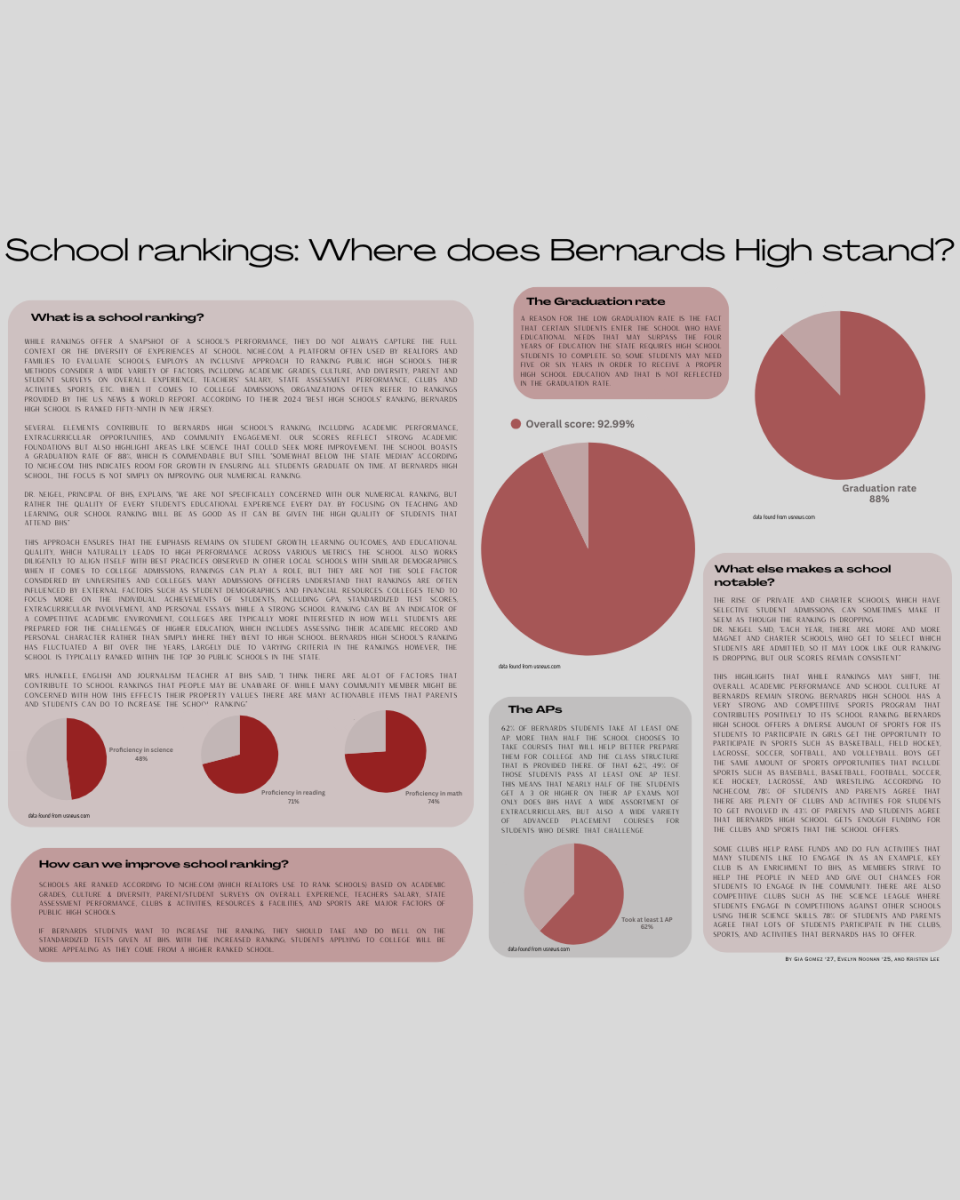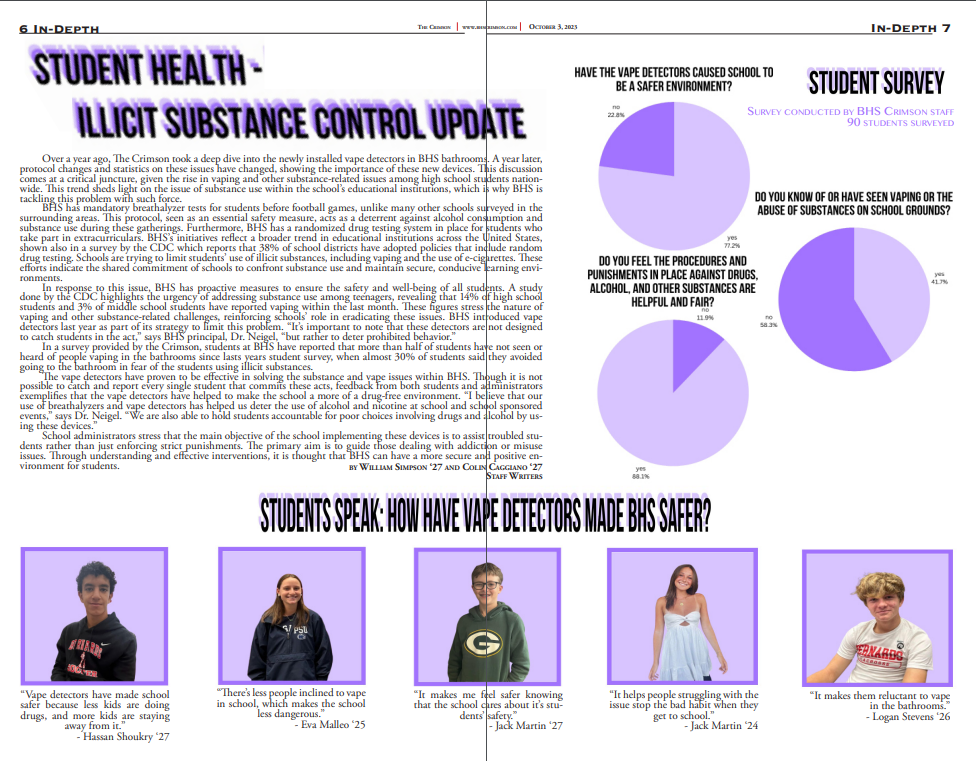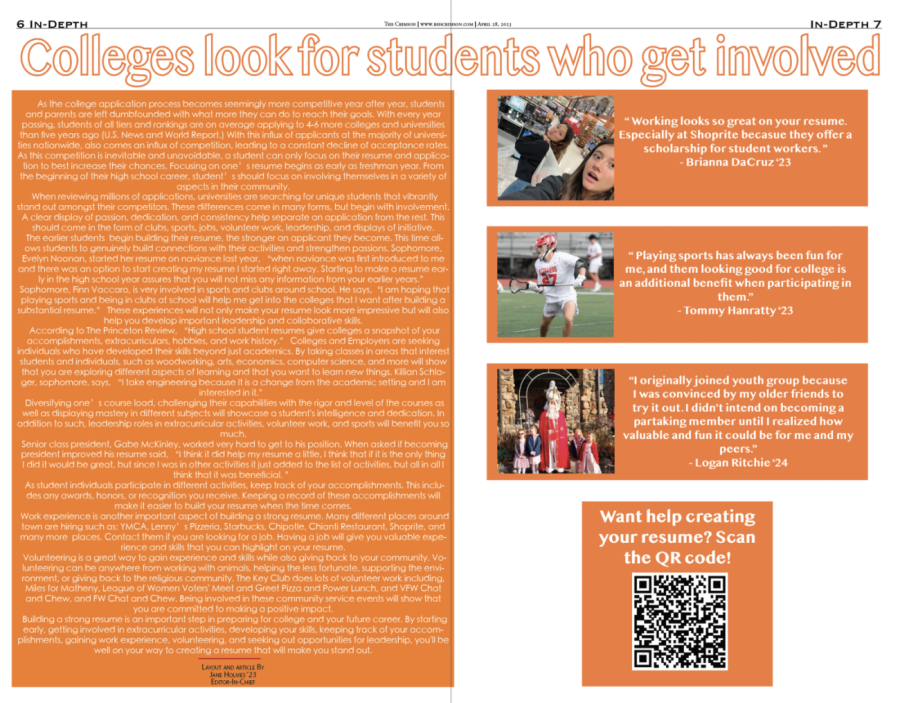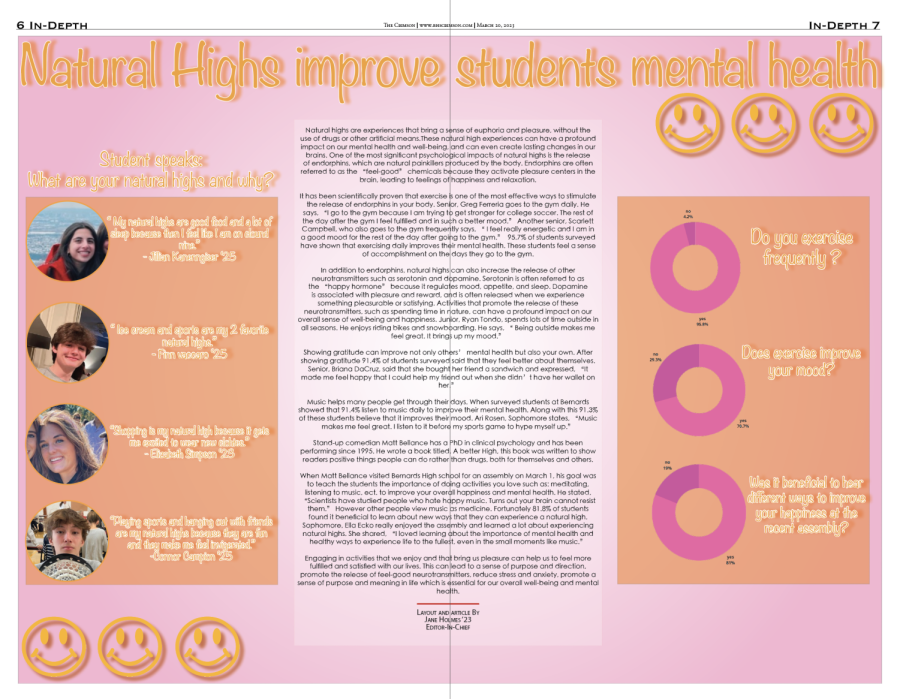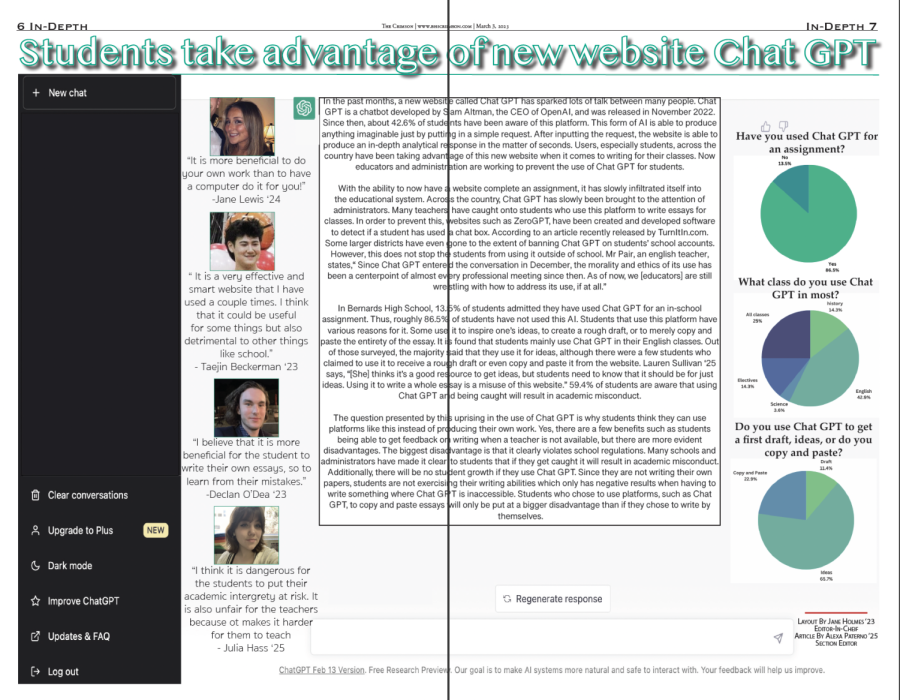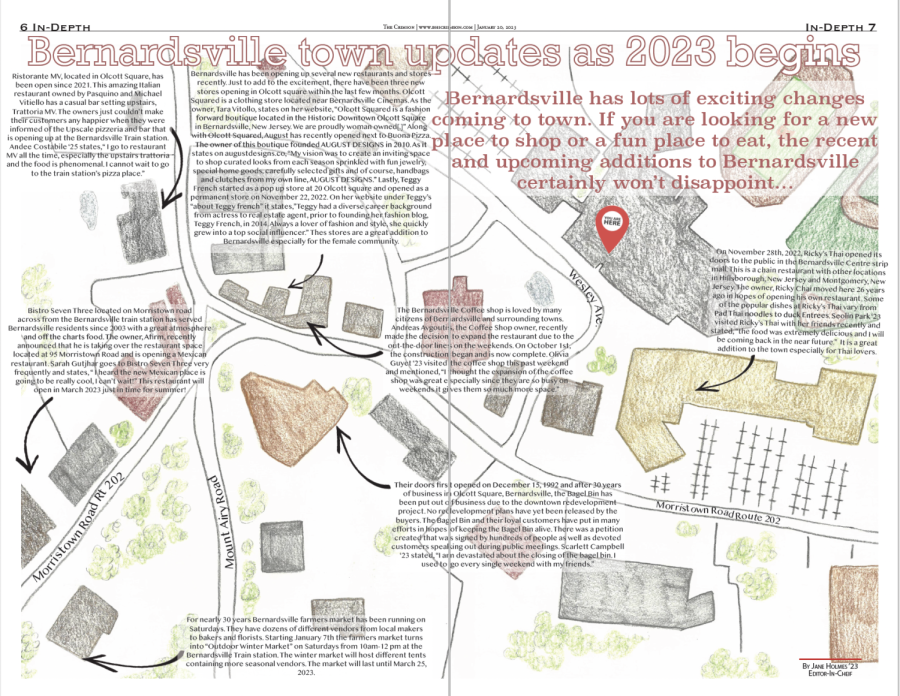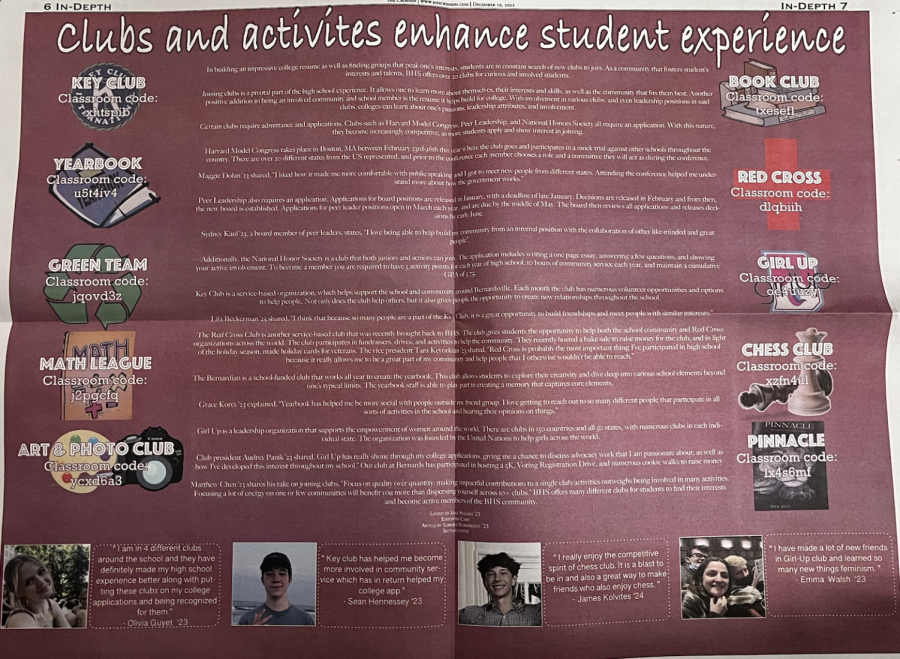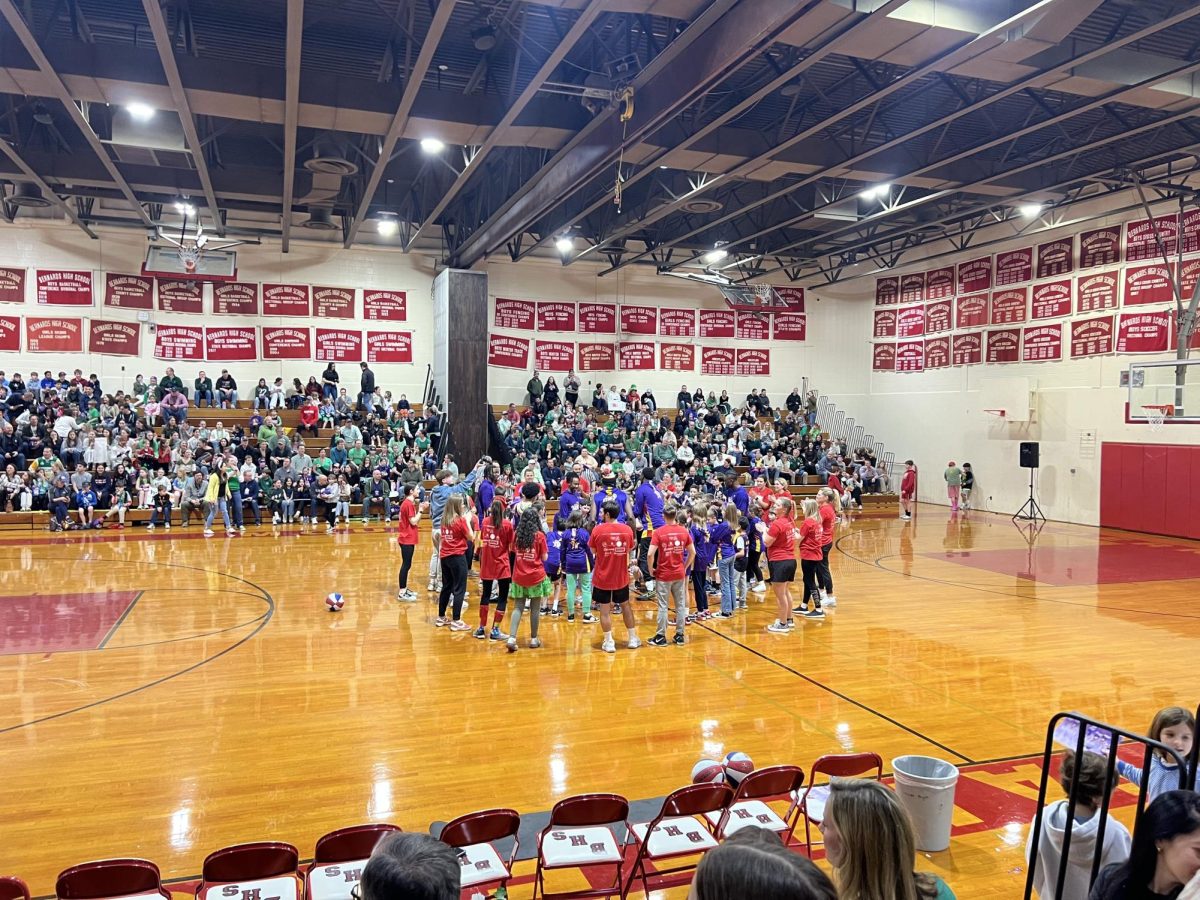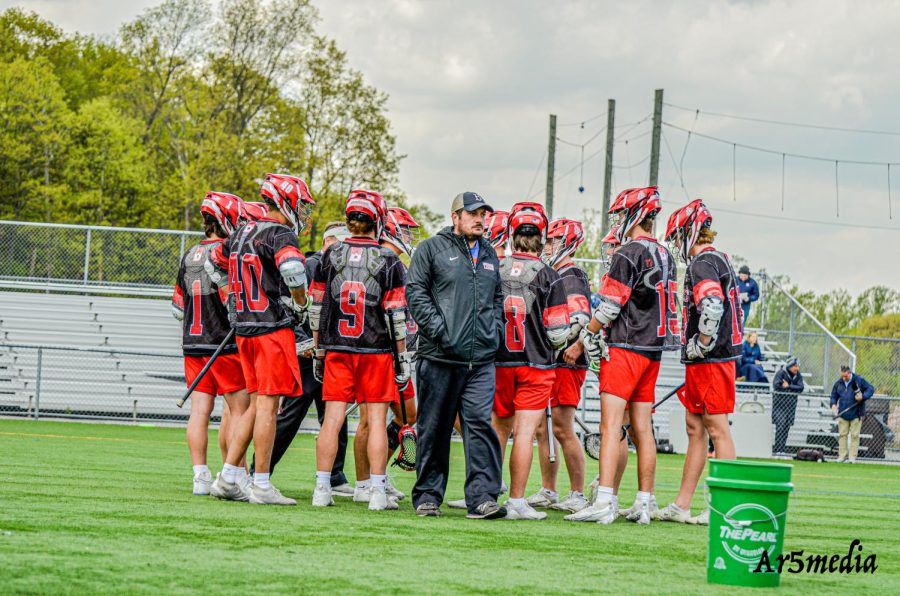In a deep dive into the journalism industry, the Crimson staff spoke to Erin Kennedy— a retired reporter and news anchor— who discussed behind-the-scenes aspects of her career in television journalism. Kennedy explained that female newscasters were treated differently than males, though both being in the same field. Mentioning things like “expiration dates” and “weigh-ins,” Kennedy left the staff with questions about not only the industry, but society as a whole. So how does this workforce sexism impact everyone?
There have been countless accounts from women in every industry of being victims of blatant sexism. There have been stories like that of Gretchen Carlson who was fired after refusing sexual contacts with her boss, eventually suing him for sexual harassment. Stories and cases like this have led to the firing of important people throughout the news industry and beyond, such as from Fox News anchor Ed Henry, who was accused of sexual misconduct and fired after the company received a complaint from a former employee.
According to Pasternak Law, in fact, between 54% and 81% of women claim to experience some level of workplace sexual harassment. They are 93% more likely to be harassed by men at work, as well.
Also with this sexism, we see the very strict regulation of the appearance of women. Through fields like social media, television journalism, and sales, there is a high stress on the appearance of employees. This helps to generate the message a brand or person is trying to send to viewers and customers, which can be regulated by employees and businesses. This is abused regularly, though, with strict codes being placed on the appearance of these women. In a story published by the HR Digest, Chakia Harvell explains that she was spoken to on multiple occasions for not dressing “feminine enough” even though she adhered to the company’s business casual dress code. Stories like Harvell’s and others have all been shared, exposing the type of treatment that women face while at work each and every day.
Our society is doing more and more to increase the awareness of these issues, though they are still not a widely-known thing. The Crimson Staff have interviewed several members of different workforces to which these issues are prominent, talking about what is a prevalent issue throughout our society today but isn’t a prevalent topic of conversation.
Newscasting
Through newscasting and anchoring, the females throughout the workforce have notoriously been treated without the same respect as their male counterparts. These women are subjected to comments from both viewers and coworkers, leaving them in a situation where they just have to take the blows.
The television news industry is majorly affected by the appearance of the anchors and how they interact with the audience. The industry uses “QScores” to regulate their successes with certain anchors, which is the industry standard for determining the effectiveness of anchors and TV personnel. These scores are largely affected by the physical appearance of the anchors, as it is a measure of how the masses view the anchors and the channels.
There have been numerous accounts of anchors and reporters receiving comments from both viewers and coworkers. Dayne Marae, an anchor with ample experience in the field, says, “In my more than 10+ years working in this industry, I can’t count the number of emails the entire news department receives about female news anchors and reporters. Most of the time they’re commenting on our appearance- what we are wearing, how our hair looks, our makeup and whatnot.”
With such importance of their physical appearance, these news anchors are always under a spotlight by viewers and by other members of their staff. A study done by Reporters without Borders states that 51% of sexual violence throughout the news industry is perpetuated by superiors and 46% of this sexual violence comes from colleagues and coworkers.
With years of experience at several large stations,Kennedy further explains that the female news anchors were known to have “an expiration date” whereas the men didn’t, as their looks would eventually deteriorate.
Though the newsroom is a very looks-centered place, there isn’t any sort of excuse for the type of blatant sexism that is seen towards the female anchors and reporters.
Dayne Marae
Dayne Marae, a member of the newscasting industry, is currently an anchor and reporter for WFMZ 69, based out of Pennsylvania.
Dayne says that though she is saddened by these issues, she isn’t at all surprised that it’s being brought into light. Though she says that she isn’t sure if it is because of her luck with stations, she has only been treated with the utmost respect by her colleagues. Within the stations Dayne has worked at, she notes that she has been lucky enough to not encounter any specific limits to what she can and can not wear.
While she has never had any issues inside her workplace, Dayne points out that her viewers are not always as forgiving. She’s received a number of emails about the female news anchors at her stations, the vast majority of which comment on their appearances. She explains that she receives comments like “the camera does you no favors” and other thoughts on her appearance.
Dayne states that these comments don’t get to her, though h: “Personally, I would be much more bothered if viewers commented on HOW I did my job,” says Dayne. “If I was constantly told that I wasn’t a good news anchor, that would bother me. I take A LOT of pride in my work and I really try to have my best show- every show.”
She also explains that she “couldn’t care less about their viewers’ comments on her appearance. “Also, for every nasty or rude comment, there are nice ones as well. I focus more on those!”
Dayne leaves the aspiring journalists with the memento that these harsh realities may be true for some people, but not for all of them. She says, “Qualified, experienced, professional, GOOD talent is valued, important and NEEDED now more than ever. It’s a privilege to have a senior female news anchor/reporter on staff. Period. Trust me, we are ALWAYS looking for good, experienced talent. Men and women.”
Erin Kennedy
Erin Kennedy met with the BHS Crimson Staff for an unrelated journalism interview, in which she gave important insight into the industry and its standards. Now a retired news anchor, Kennendy , has worked in stations in Providence, Rhode Island, Cleveland, Ohio, and Chicago, Illinois. Kennedy has given countless interviews and discussed similar topics on her podcast.
Kennedy shares that the things that these stations got away with were wild. There were weigh-ins for a meteorologist, consultants brought in, and very specific standards given to specifically the female news anchors.
Kennedy shares that any changes in appearance would be considered a fireable offense. “[You] just get conditioned to say yes even when you shouldn’t say yes because if you say no they will fire you,” Kennedy says.
The physical standards of the stations varied, with different dress codes and expectations at each one. They had a book of colors, clothes, and more, . that the anchors were and were not allowed to wear.
Kennedy tells that through the journalism industry, “As a woman you have a shelf life.” She tells of less signings as age increases and less demand for older newscasters, and more focus on the younger, newer anchors.
Kennedy says that newscasting is all about connecting with people. When this is on TV, however, this has a high focus on an anchor’s physical appearance. If the audience is more interested in younger, good-looking females, that’s what the news stations are going to push forward. She tells of her time in Cleveland, where she eventually left because she didn’t connect with the viewers well enough. She says that she was told she was “too smart” and “too pretty” for the Cleveland audience, and their viewers needed someone “more folksy.”
All in all, “it all comes down to engagement and money,” says Kennedy, and she tells that no matter what they have to do, stations will do it to make sure both of those increase. Whether it compromises the integrity of a female newscaster or places very specific standards on her, it’s going to be done.
54% of women have been harassed in the workplace
Griffin DeMarrais
Griffin DeMarrais is a member of the journalism industry, reporting for Region 8 News. His job includes various newscasting activities, and he shares his experiences with the gender-roles through his workplace.
DeMarrais states that he does have a dress code, depending on what he has planned for his day. They are “not super strict,” though. There have been, though, informal limits placed on his appearance. DeMarrais was advised against growing certain facial hair and asked to look as professional as possible, to which he is able to laugh off and shares that he understands. Coworkers have been told to clean themselves up to look more professional, as well. DeMarrais explains, “I think it is important to know that it is never anything about height or weight, it is mainly about looking professional.”
Within his office, DeMarrais says that there are limited differences between the men and women he works amongst. “Everyone has the same expectation, to come in and do good work no matter what your gender is. My boss is a female, and she makes a concerted effort to make sure she is treating everyone the same.”
DeMarrais shares that though there isn’t much sexism seen in their offices, however, there are a number of stories that he’s heard from female reporters in the field. “That is why our manager always make sure someone goes with them to different stories,” DeMarrais says.
DeMarrais says that he has not directly been impacted or experienced any sort of sexism through his line of work, and doesn’t recall any specific instances where this has been present. “In fairness, I am a male and I know that I don’t go through the same things the females do,” he concludes.
Camp Counselors and retail workers
Through the retail industry, the physical appearance of employees can make or break the interaction between a company and a customer. The appearance of the employees throughout the stores is an important part of the brand’s image, where they are the face that the customer sees.
With this, though, we see unfair dress codes and many unprofessional policies in place for the employees. These policies hurt employees and their image.
According to Venable.com, Title VII of the Civil Rights Act of 1964 states that there can be gender specific dress codes, and employers are taking this liberally and allowing different codes to be put in place for women and men.
Though they don’t have full time jobs, BHS students have also faced this type of unfairness through their jobs. Whether it’s different responsibility allocations to men and women in an office, putting women in the front of restaurants to greet guests while the men cook, or sending female counselors to arts and crafts and their male counterparts to sports at a summer camp, the BHS students see this type of sexism in their workplaces, too.
Emma Swope
Emma Swope is a senior at BHS who has just stopped working for a local deli in Bedminster.
Emma experienced a different type of sexual bias through her job. “There were a lot of old men who were regulars who would act weird towards me,” she says. “There was one in particular who would say some questionable things like ‘I saw you running the other day’ and would give me absurd amounts of tips.”
Emma experienced several uncomfortable interactions with customers. From rude comments to strange interactions, Emma’s situation was heavily affected by her gender.
While Emma reports she was frequently approached by older men at work- what she describes as a very uncomfortable situation- she says, “my 40-year-old, male boss has never been hit on!”
STEM
Sexism has impacted many careers, especially those that are science, technology, engineering, and math (STEM) based. Women who enter a field in STEM are commonly entering a more male-dominated industry.
A 2023 MIT study records only 28% of people going into STEM being female. Women only make up a quarter of people entering these workforces. This includes technology development, engineering, the medical field, and more.
Women are often stereotyped as less capable than men and labeled as less likely to perform at the same level as men. While this is not every company, a majority of the STEM related companies have this issue.
Stereotyping and sexism can discourage women from pursuing a career in STEM. Either due to disinterest or discouragement, less women are entering a job related to STEM, which is a problem that colleges are working to solve.
There is a significant difference in the percentage of men as opposed to women that have leadership roles in these industries. In both the technology and the pharmaceutical industry, the amount of women with leadership roles is significantly lower than the amount of men in charge.
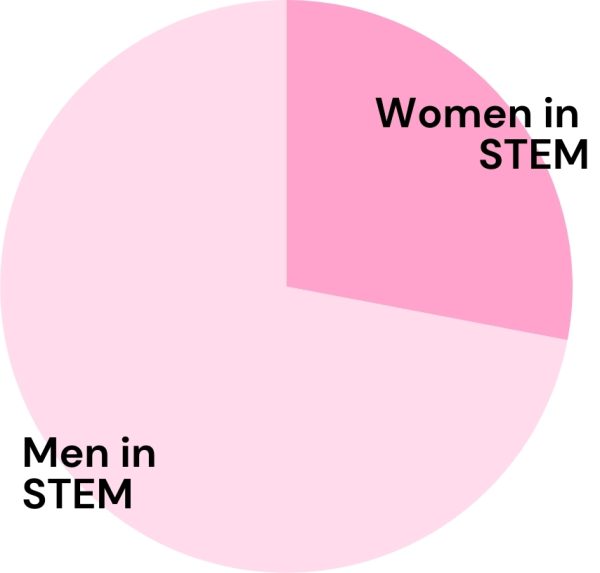
Elizabeth Chen
Elizabeth Chen is a current sophomore at Bernards High School . There is a noticeable difference between the amount of men versus women who enter a STEM related workforce. As well as this, technology development and programming is seen as a more masculine job.
This can be discouraging, even in a more pro-diversity community. Less women are becoming interested in STEM related workforces, which only furthers sexism within these fields. In Bernards High School Tech Club, there are only about two female students as opposed to about ten male students.
Chen said, “I think this could be caused by gender roles and how if a girl is in STEM, they’re seen as nerdy or weird while that’s not really true for boys.”
Chen thinks that high School girls may be discouraged from joining STEM clubs such as tech clubs in fear of being judged. Women may also be intimidating to join a club that is male dominated. This only furthers gender stereotyping and sexism within society.
While integration goals aim to include more women in these industries, sexism is a prominent problem in many fields of work. Although there are goals to decrease this, due to stereotypes and discrimination, less and less women are becoming interested in STEM.
Nitu Pauly
Nitu Pauly, an executive at a staffing company, Cyber Coders, explains how sexism impacts the technology industry. While companies are trying to increase the diversity seen in the workplace, there are still some ways to go before that goal is accomplished.
“There was a lot of sexism in companies like Riot Games for example. It makes for a toxic work environment where women tend to leave the role/company and don’t advance due to the sexism they face,” said Pauly.
However, Pauly mentions that recently there has been an increase in hiring all genders, ethnicities and the LGBTQ community, in order to increase diversity and meet the recent inclusive preferences.
Pauly mentions, “Generally speaking, companies want to see diversity in 2023. So I find that we have less women to send to clients due to not as many women being in STEM which colleges have been looking to solve.”
More male figures tend to work as and are hired for this career. There are noticeable differences in leadership roles within these careers with more men being in higher positions. There is a difference of about 20% female leadership roles to 80% male leadership roles.
“Most bosses are still male but hopefully That changes as more companies make environments more welcoming for women,” said Pauly.
While companies are trying to be more inclusive of all genders, there is still a lot to change before that is accomplished.




